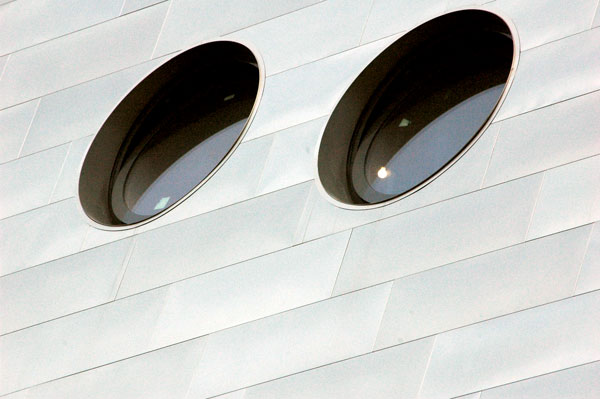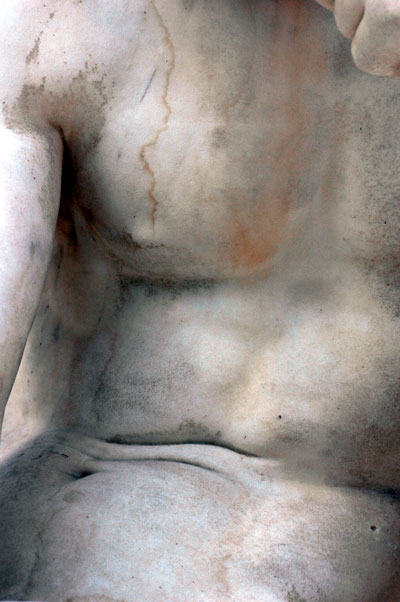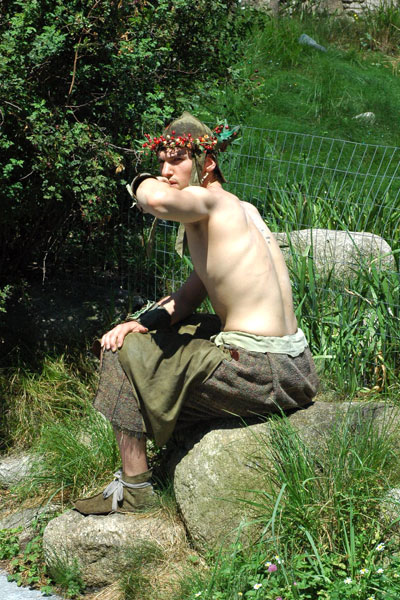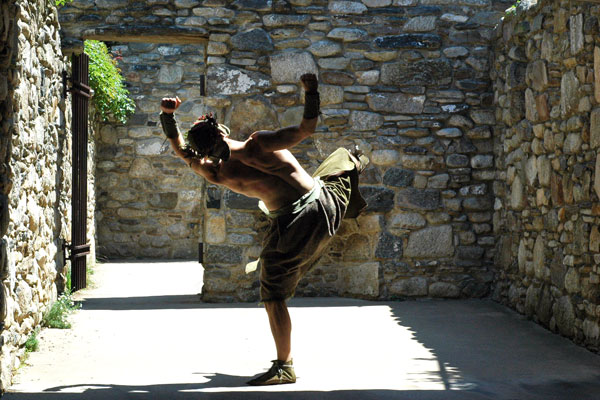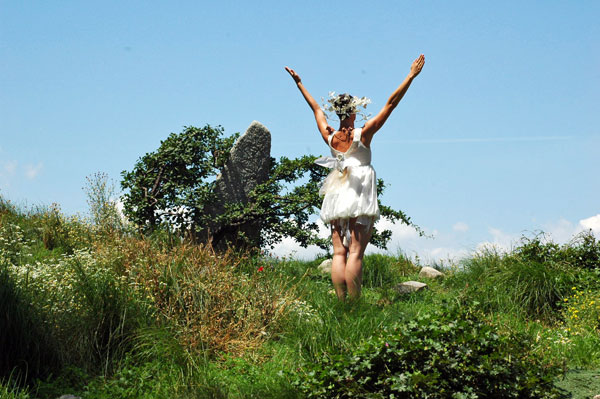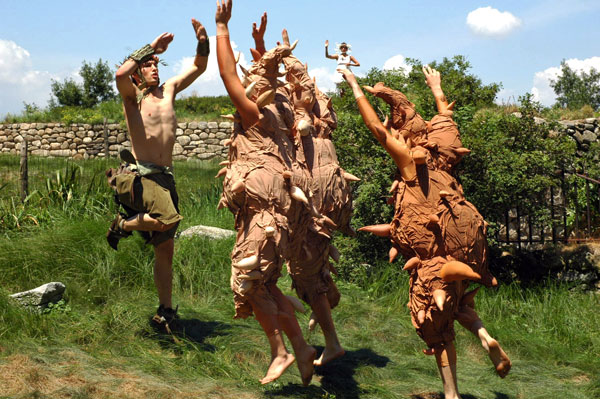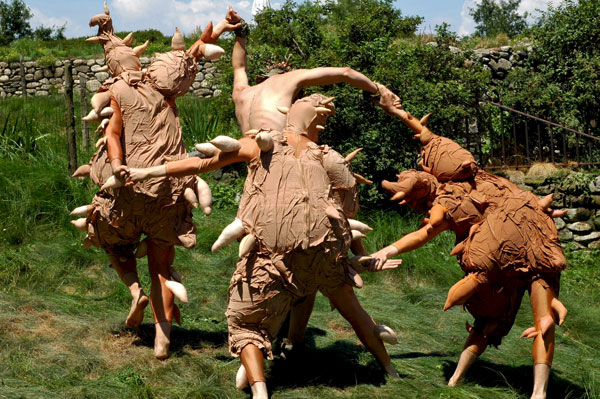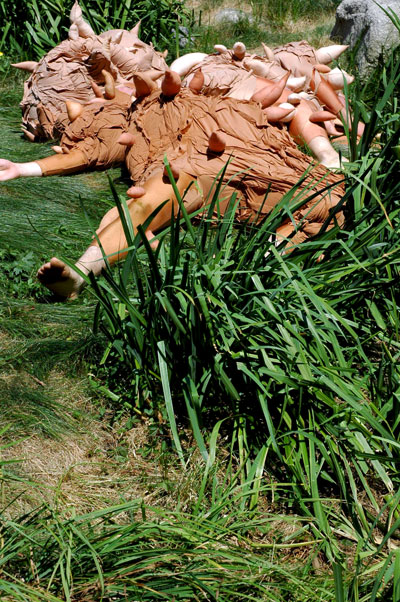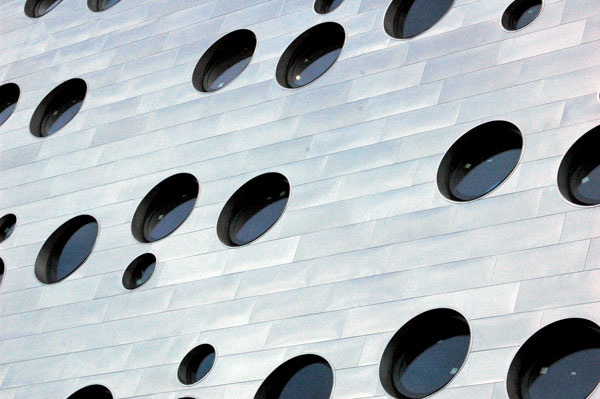
Because I believe so strongly in preserving an interesting building's integrity, and an artist's vision, I find it hard to say this, but what's happening to the building that once housed Fr. Bruce Ritter's Covenant House shelter for homeless and runaway youth may just possibly be an improvement over the original concept - and execution.
I've now seen what looks to be the almost-finished "Dream Hotel Downtown" of hotelier Vikram Chatwal, located at 346 West 17th Street. It is a refitting of a building designed and constructed for the Maritime Union half a century ago to accommodate medical and recreational facilities for its members. The 11-story building is located behind the re-conceived Maritime Hotel, and both eccentric structures were designed by a young architect named Albert Ledner.
I remember the buildings when they were new, and the excitement they created, and I'm delighted that at least two of this architect's trio of Village commissions has survived at all.
I say that the new building may be an improvement because, while I've always loved its perfect round windows, along with their beautifully-crafted frames and hopper-like opening mechanisms, the new dancing pattern punched out by the current design team, Handel Architects LLP, in two different sizes of openings, really makes me smile. Also, the building's original tiny ceramic tiles were replaced by stucco years ago, probably because of problems inherent in the materials, and the way the horizontal lines of the (tile-like) rectangles composing the new shiny (hull-like) metal skin wrap around the tilted corners of the main facade, and dip down along the sides, showcases a very different effect, one at least equal to the 1960's original.
The overall building shape remains unchanged.
Now if only somebody would change that name: "Dream Hotel" scares me silly.
NOTE: Except for its romance-novel appellation, I think I could love this building, but now I'm wondering if it's already a doomed affair: While looking for additional information on the building's design and construction, and searching, sometimes fruitlessly, for links to incorporate in this blog, I got the impression that the project may be on hold. There are some indications that the "dream" may be trouble, because of problems related to money, the health of the principal, or (perhaps the least daunting challenge) engineering problems, and I notice that the hotel web site itself is still "under construction".
